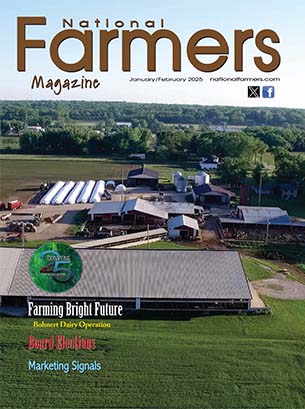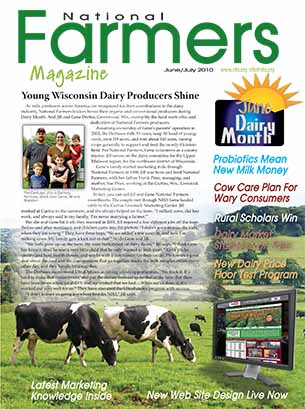U.S. Ag Needs a 21st-Century New Deal
These are difficult times in farm country. Historic spring rains – 600 percent above average in some places – inundated fields and homes. The U.S. Department of Agriculture predicts that this year’s corn and soybean crops will be the smallest in four years, due partly to delayed planting.
Even before the floods, farm bankruptcies were already at a 10-year high. In 2018 less than half of U.S. growers made any income from their farms, and median farm income dipped to negative $1,553 – that is, a net loss.
At the same time, the Intergovernmental Panel on Climate Change estimates that about 12 years remain to rein in global greenhouse gas emissions enough to limit global warming to 1.5 degrees Celsius above pre-industrial levels.
As scholars, we believe U.S. agriculture needs to make a systemwide shift that cuts carbon emissions, reduces vulnerability to climate chaos and prioritizes economic justice. Taking the lead from environmental justice and labor movements, we call this process a just transition.
Reconstructing rural America and dealing with climate change are both part of this process. Two elements are essential: agriculture based in principles of ecology, and economic policies that end overproduction of cheap food and reestablish fair prices for farmers.
Climate Solutions on the Farm
Agriculture generates about 9 percent of U.S. greenhouse gas emissions from sources that include synthetic fertilizers and intensive livestock operations. These emissions can be significantly curbed through adopting methods of agroecology, a science that applies principles of ecology to designing sustainable food systems.
Agroecological practices include replacing fossil-fuel-based inputs like fertilizer with a range of diverse plants, animals, fungi, insects and soil organisms. By mimicking ecological interactions, biodiversity produces both food and renewable ecosystem services, such as soil nutrient cycling and carbon sequestration.
A beneficial practice is switching from row crops to agroforestry, which combines trees, livestock and crops in a single field. This approach can increase soil carbon storage by up to 34 percent. It can also turn various wastes into nutrient inputs.
Unfortunately, many U.S. farmers are stuck in industrial production. A 2016 study by an international expert panel identified eight key lock-ins, or mechanisms, that reinforce the large-scale model. They include consumer expectations of cheap food, export-oriented trade, and most importantly, concentration of power in the global food and agricultural sector.
Because these lock-ins create a deeply entrenched system, revitalizing rural America and decarbonizing agriculture require addressing systemwide issues of politics and power. We believe a strong starting point is connecting ecological practices to economic policy, especially price parity – the principle that farmers ought to be fairly compensated, in line with their production costs.
Economic Justice on the Farm
Farmers first achieved something like parity in 1910-1914. However, after World War 1, crop prices fell below the cost of production and farmers began going broke in a prelude to the Great Depression. Unsurprisingly, they tried to produce more food to get out of debt, even as prices collapsed.
President Franklin Roosevelt’s New Deal included programs that directed public investments to rural communities and restored parity. The federal government established price floors, bought up surplus commodities and stored them in reserve. It also paid farmers to reduce production of basic crops, and established programs to prevent destructive farming practices that had contributed to the Dust Bowl.
In the parity years, from 1941 to 1953, the floor price was set at 90 percent of parity, and the prices farmers received averaged 100 percent of parity. As a result, purchasers of commodities paid the actual production costs.
But after World War II, agribusiness interests, such as Archer Daniels Midland and Cargill and the American Farm Bureau Federation, systematically dismantled the supply management system.
Furthermore, under the watch of Earl Butz, who served as secretary of agriculture from 1971 to 1976, prices were allowed to fall and parity was replaced by federal payments to supplement farmers’ incomes.
The resulting lock-ins reflect what many scientific assessments now recognize as a global food system that is unsustainable for farmers, eaters and the planet.
A new New Deal for Agriculture
Along with other scholars, we have urged Congress to use the proposed Green New Deal to promote a just transition in agriculture. We see this as an opportunity to restore wealth to rural America in all of its diversity – particularly to communities of color who have been systematically excluded for decades from benefits available to white farmers.
This year’s biblical floods in the Midwest make any kind of farming look daunting. However, we believe that if policymakers can envision a contemporary version of ideas in the original New Deal, a climate-friendly and socially just American agriculture is within reach.










